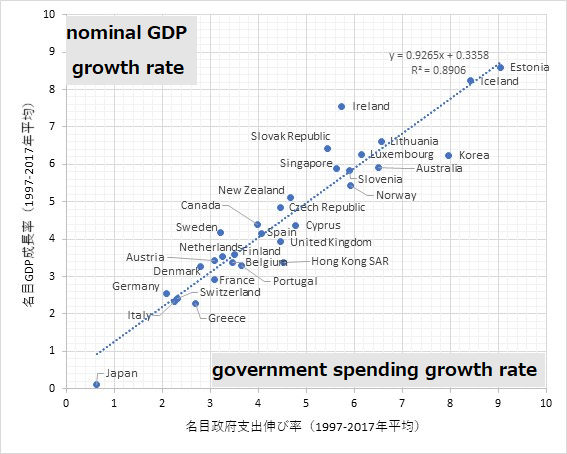The subject of this article is the relationship between the average growth rate of the money circulation velocity, V, and that of government expenditure, G. The figure below shows a distribution of average values for about 20 years in 33 countries. The average growth rate of G ranges from 2% to 10%, and the average growth rate of V ranges approximately less than 1% (one example is larger than 2%). In the past 20 years, it is concluded that "the growth rate of circulation velocity V is smaller than the growth rate of government expenditure G". This explains a direct proportional relationship between the growth rate of nominal GDP and the growth rate of G.
 |
| The x-axis shows the averaged growth rate of G, and the y-axis show the averaged growth rate of V. |
Our purpose for this article is to explain the direct proportional relationship between the growth rate of G and the growth rate of nominal GDP, as is shown in our previous article, "A relationship between nominal GDP growth rate and government spending growth rate."
In that article, the author showed that this direct proportional relationship can be explained under the money circulation, if the growth rate of V is equal to 0, and if the growth rate of G is equal to the growth rate of domestic investment, I. The above figure shows that the growth rate of V is small compared to the growth rate of G. This leads to the above direct proportional relationship.







